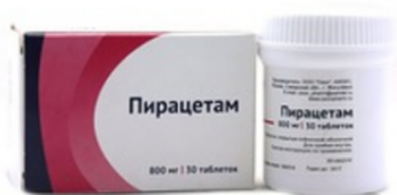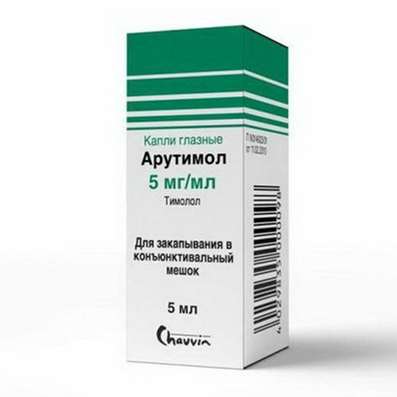Instruction for use: Klopidex
I want this, give me price
Dosage form: film-coated tablets
Active substance: Clopidogrelum
ATX
B01AC04 Clopidogrel
Pharmacological groups
Antiaggregants
The nosological classification (ICD-10)
I20 Angina [angina]: Heberden disease; Angina pectoris; The attack of angina pectoris; recurrent angina; Spontaneous angina; Stable angina pectoris; Angina rest; Angina progressing; Angina mixed; Angina spontaneous; stable angina; Chronic stable angina; Angina Syndrome X
I21 Acute myocardial infarction: Myocardial infarction in the acute phase; Acute Myocardial Infarction; Myocardial infarction with pathologic Q wave and without; Myocardial infarction complicated by cardiogenic shock; Infarction left ventricular; Transmural myocardial infarction; Myocardial infarction netransmuralny (subendocardial); Netransmuralny myocardial infarction; Subendocardial myocardial infarction; The acute phase of myocardial infarction; Acute myocardial infarction;Sub-acute phase of myocardial infarction; Subacute phase of myocardial infarction; Thrombosis of the coronary arteries (the arteries); Threatened myocardial infarction; Myocardial infarction without Q wave
I24.9 Acute ischemic heart disease, unspecified: Coronary heart disease; Coronary insufficiency; Acute coronary insufficiency; Acute coronary syndrome
I25.2 Transferred last myocardial infarction: Cardiac syndrome; Myocardial infarction; post-MI; Rehabilitation after myocardial infarction; Reocclusion of the operated vessel; Angina postinfarctnaya; Status after myocardial infarction; Status after myocardial infarction; myocardial infarction
I63 Cerebral infarction: ischemic Stroke; Ischemic brain disease; Ischemic stroke; Ischemic stroke and its consequences; Ischemic cerebral stroke; Ischemic cerebrovascular accident; Ischemic brain damage; Ischemic brain damage; ischemic conditions; Cerebral ischemia; Acute hypoxia brain; Acute cerebral ischemia; Acute ischemic cerebrovascular accident; Acute cerebral infarction; Acute ischemic stroke; Acute period of ischemic stroke; Focal cerebral ischemia; Ischemic stroke; recurrent stroke; The syndrome of Morgagni-Adams-Stokes; Chronic cerebral ischemia; cerebrovascular stroke; embolic stroke; Ischemic brain damage
I73.9 Peripheral vascular disease, unspecified: angiospasm; Vasospasm / vasoconstriction; vasospastic disorders; Violation of venous microcirculation; Violation of circulation; Violation of peripheral blood circulation; Lack of peripheral blood circulation in the lower and upper limbs; Peripheral arterial occlusive disease; Peripheral arterial occlusive disease in stages III-IV on Fontaine; Peripheral vascular insufficiency; Peripheral vascular lesions; Peripheral vascular disorders; Peripheral circulatory disorder; spasm of artery; angiospasm; Functional peripheral arterial disease; Chronic occlusive disease; Chronic obliterating diseases of the lower limbs; Chronic arterial occlusive disease
I74 Embolism and arterial thrombosis: Thrombosis of effort (stress); Arterial thrombosis; Arteriothrombosis; Subacute and chronic arterial thrombosis; Subacute thrombosis of peripheral arteries; Postoperative thrombosis; Vascular thrombosis; Vascular embolism; Thrombosis of aortocoronary shunt; Arterial thrombosis; Thrombosis of arteries; Coronary artery thrombosis; Coronary thrombosis; Thrombosis of blood vessels; Thrombosis with ischemic stroke; Thrombosis with general surgical operations; Thrombosis in Oncology Operations; Vascular thrombosis; Thrombus formation in the postoperative period; Thrombotic complications; Thromboembolic diseases; Thromboembolic syndrome; Thromboembolic complication in the postoperative period; Thromboembolism of arteries; Partial vascular thrombosis; Embolism; Embolism of arteries
Z100 * CLASS XXII Surgical practice: Abdominal surgery; adenomectomy; Amputation; Coronary angioplasty; Angioplasty of the carotid arteries; Antiseptic skin treatment for wounds; Antiseptic Hand; Appendectomy; atherectomy; Balloon coronary angioplasty; Vaginal hysterectomy; The coronary bypass; Interventions in the vagina and cervix; Interventions on the bladder; Intervention in the mouth; Restoration and reconstructive surgery; Hand hygiene of medical personnel; Gynecologic surgery; Gynecological intervention; Gynecological surgery; Hypovolemic shock during operations; Disinfection of purulent wounds; Disinfection of wounds edges; Diagnostic intervention; Diagnostic procedures; Cervical Diathermocoagulation; Long-surgery; Replacing the fistula catheters; Infection in orthopedic surgery; Artificial heart valve; cystectomy; Short-term outpatient surgery; Short-term operation; Short surgical procedures; Krikotireotomiya; Blood loss during surgery; Bleeding during surgery and in the postoperative period; Kuldotsentez; laser photocoagulation; laser coagulation; retinal laser coagulation; Laparoscopy; Laparoscopy in Gynecology; CSF fistula; Small gynecological operations; Small surgical procedures; Mastectomy and subsequent plastic; mediastinotomy; Microsurgical operations on the ear; Mukogingivalnye operation; suturing; Minor surgery; neurosurgical operation; Immobilization of the eyeball in ophthalmic surgery; testectomy; pancreatectomy; Perikardektomiya; The period of rehabilitation after surgery; The period of convalescence after surgery; Percutaneous transluminal coronary angioplasty; Pleural thoracentesis; Pneumonia postoperative and posttraumatic; Preparation for surgical procedures; Preparation for surgery; Preparation of the surgeon's hands before surgery; Preparation of the colon for surgical procedures; Postoperative aspiration pneumonia in neurosurgical and thoracic surgery; Postoperative nausea; Postoperative bleeding; postoperative granuloma; postoperative shock; The early postoperative period; myocardial revascularization; Radiectomy; gastric Resection; bowel resection; uterine Resection; liver Resection; enterectomy; Resection of part of the stomach; Reocclusion of the operated vessel; Bonding tissues during surgical procedures; Removal of sutures; Condition after eye surgery; Condition after surgery; Condition after surgery in the nasal cavity; Condition after gastrectomy; Status after resection of the small intestine; Condition after tonsillectomy; Condition after removal of the duodenum; Condition after phlebectomy; Vascular surgery; Splenectomy; Sterilization of surgical instruments; Sterilization of surgical instruments; sternotomy; Dental surgery; Dental intervention in periodontal tissues; strumectomy; Tonsillectomy; Thoracic surgery; Thoracic surgery; total gastrectomy; Transdermal intravascular coronary angioplasty; Transurethral resection; Turbinektomiya; Removal of a tooth; cataract surgery; Removal of cysts; tonsillectomy; Removal of fibroids; Removing the mobile primary teeth; Removing polyps; Removing broken tooth; Removal of the uterus body; Removal of sutures; Fistula likvoroprovodyaschih ways; Frontoetmoidogaymorotomiya; Surgical infection; Surgical treatment of chronic limb ulcers; Surgery; The surgery in the anal area; The surgery on the colon; Surgical practice; The surgical procedure; Surgical interventions; Surgery on the gastrointestinal tract; Surgical procedures on the urinary tract; Surgical procedures on the urinary system; Surgical intervention of the genitourinary system; Surgical procedures on the heart; Surgical manipulation; surgery; Surgery on the veins; Surgical intervention; Vascular surgery; Surgical treatment of thrombosis; Surgery; cholecystectomy; Partial gastric resection; hysterectomy; Percutaneous transluminal coronary angioplasty; Percutaneous transluminal angioplasty; Coronary artery bypass; tooth Extirpation; Extirpation of milk teeth; pulpectomy; pulsative cardiopulmonary bypass; tooth Extraction; teeth Extraction; cataract extraction; Electrocoagulation; endourological intervention; episiotomy; Etmoidotomiya; Complications after tooth extraction
Z95.1 Presence of aortocoronary shunt transplant: Coronary artery bypass grafting; Aortocoronary bypass with venous shunt
Z95.5 Presence of coronary angioplasty implant and graft: Coronary artery bypass grafting; Arteriovenous shunting; Thrombosis of arteriovenous shunt
Composition
active substance: Clopidogrel (in the form of clopidogrel hydro-sulfate form-1) 75 mg
Auxiliary substances: giprolose - 6,125 mg; Mannitol - 120.175 mg; MCC - 17.15 mg; Macrogol 6000 - 2.45 mg; Castor oil hydrogenated - 1,225 mg
Film membrane: Opadry pink (lactose monohydrate 2.8 mg, hypromellose (15 CPS) 1.921 mg titanium dioxide (E171) 1.656 mg, triacetin 0.56 mg, iron oxide red (E172) 0.063 mg) 7 mg
Pharmachologic effect
Mode of action - antiaggregational.
Dosing and Administration
Inside, regardless of food intake.
For the prevention of atherothrombotic events in patients with myocardial infarction, ischemic stroke or diagnosed peripheral artery occlusion, 75 mg once a day.
In patients with myocardial infarction, treatment should begin from the first days of the 35th day of myocardial infarction, and in patients with ischemic stroke - in the period from 7 days to 6 months after an ischemic stroke.
To prevent atherothrombotic events in acute coronary syndrome without ST segment elevation (unstable angina, myocardial infarction without Q wave), begin with a single dose of 300 mg and then take 75 mg / day (in combination with ASA in doses of 75- 325 mg / day, the recommended dose is 100 mg / day). The maximum favorable effect occurs after 3 months. The course of treatment is up to 1 year.
To prevent atherothrombotic events in acute coronary syndrome with ST segment elevation (acute myocardial infarction with ST segment elevation) - 75 mg / day with the initial single dose loading in combination with ASA and thrombolytic agents (or without thrombolytics).
Combination therapy is started as soon as possible after the onset of symptoms and lasts for at least 4 weeks. In patients older than 75 years, treatment with clopidogrel should begin without taking its loading dose.
In patients with a genetically determined decrease in the function of the isoenzyme CYP2C19, the effect of clopidogrel may be reduced. The optimal dosing regimen in such patients is not established.
The experience of using in patients with CRF or moderate degree of hepatic insufficiency is limited.
Release Form
Tablets, film-coated, 75 mg. For 15 tables. In PVC / PVDC / aluminum blister. 2 blisters are placed in a cardboard box.
Manufacturer
Ready-made dosage form: Bilim Pharmaceuticals, Turkey. Gebze Organize Sanay Belgesi (GOSS), 1900 Sokak No. 1904.
Primary / secondary packaging and issuing quality control: Beluga, medicines and cosmetics dd, Republic of Croatia. 48000, Koprivnitsa, ul. Danica, 5.
The owner of the registration certificate: Belupo, medicines and cosmetics dd, Republic of Croatia.
Representation of the company Belupo, medicines and cosmetics dd, Republic of Croatia in Russia: 119330, Moscow
Conditions of supply of pharmacies
On prescription.
Storage conditions of the drug Klopidex
At a temperature of no higher than 25 ° C.
Keep out of the reach of children.
The shelf life of the drug Klopidex
2 years.
Do not use beyond the expiration date printed on the package.

 Cart
Cart





